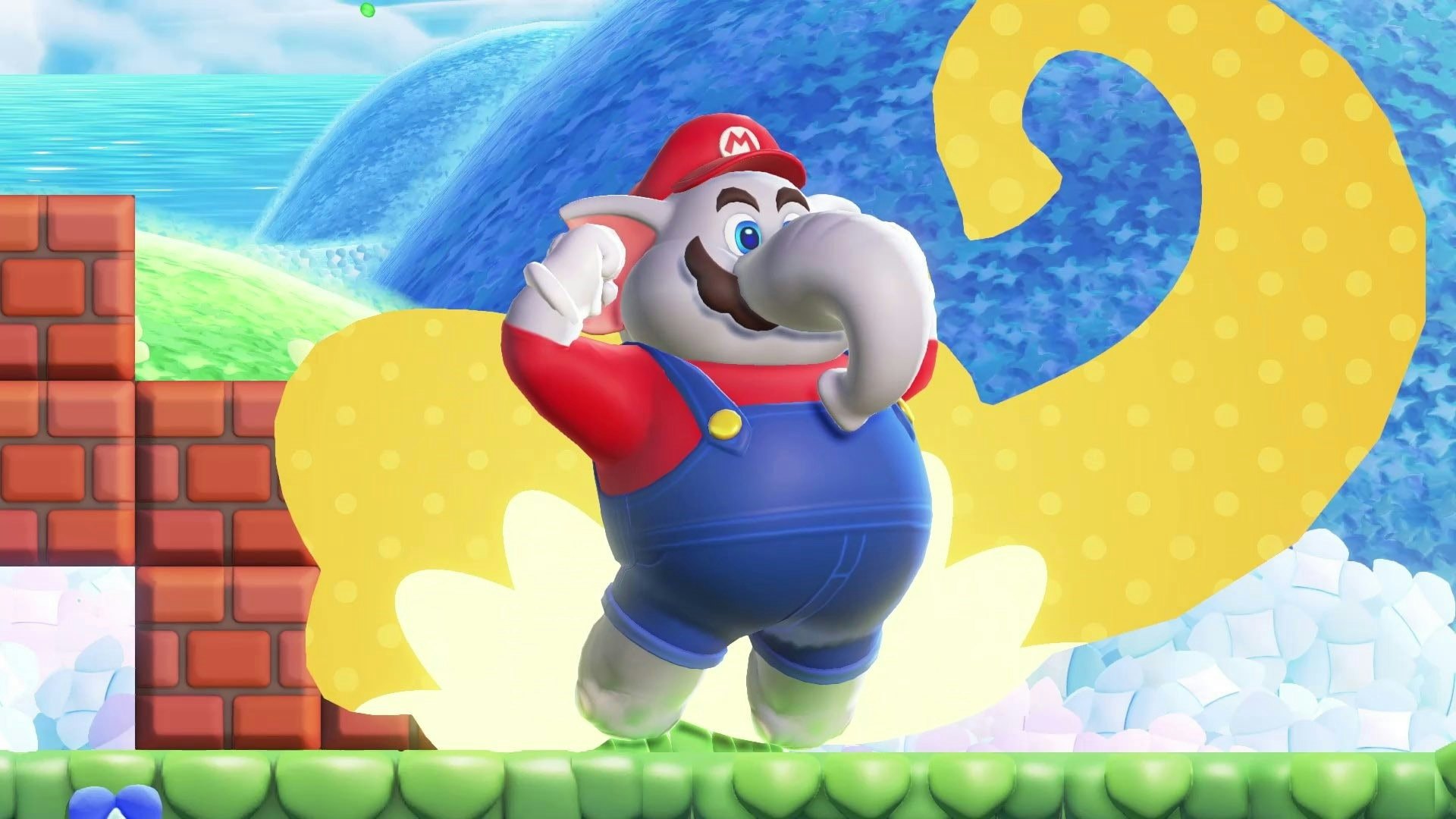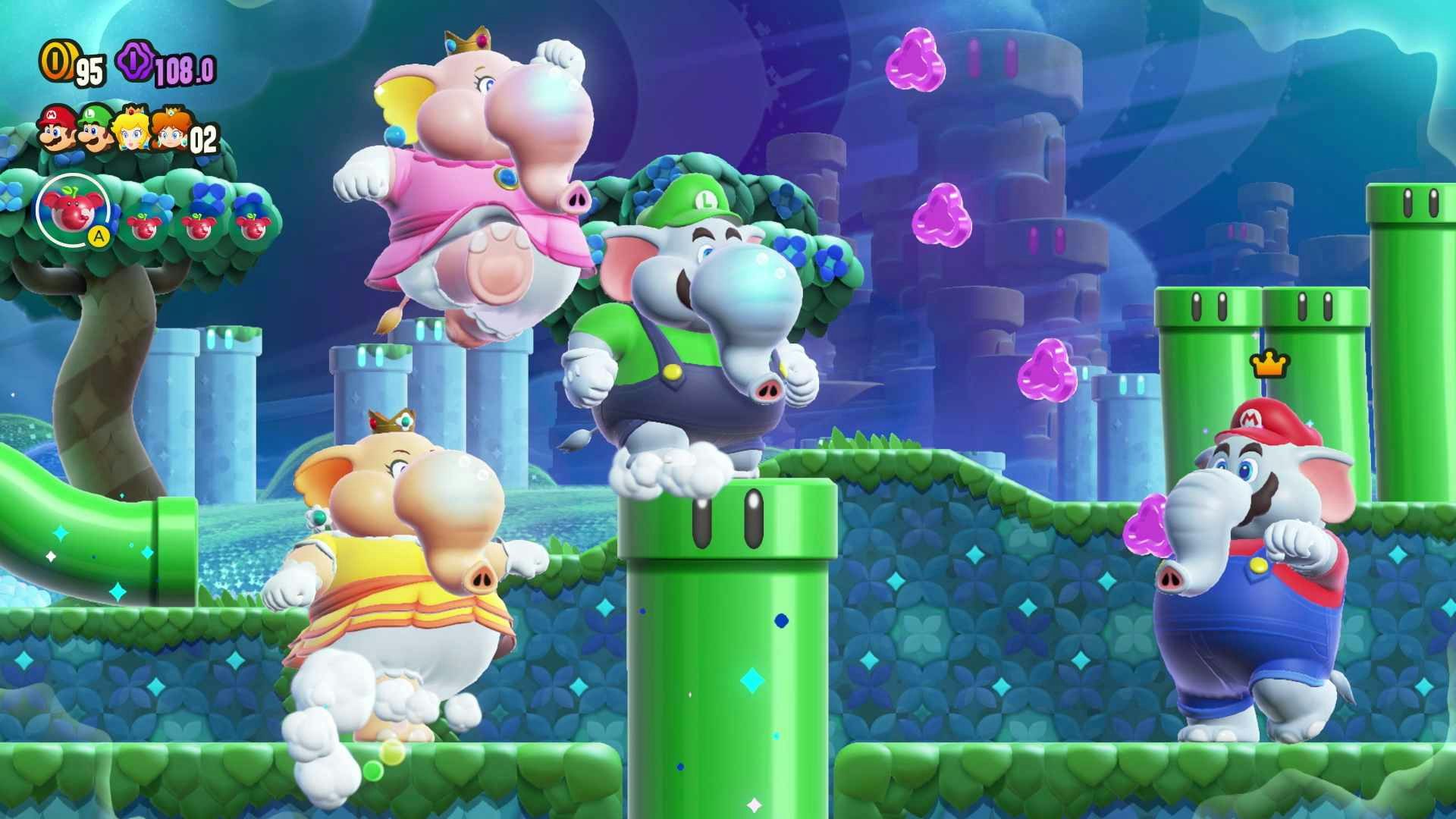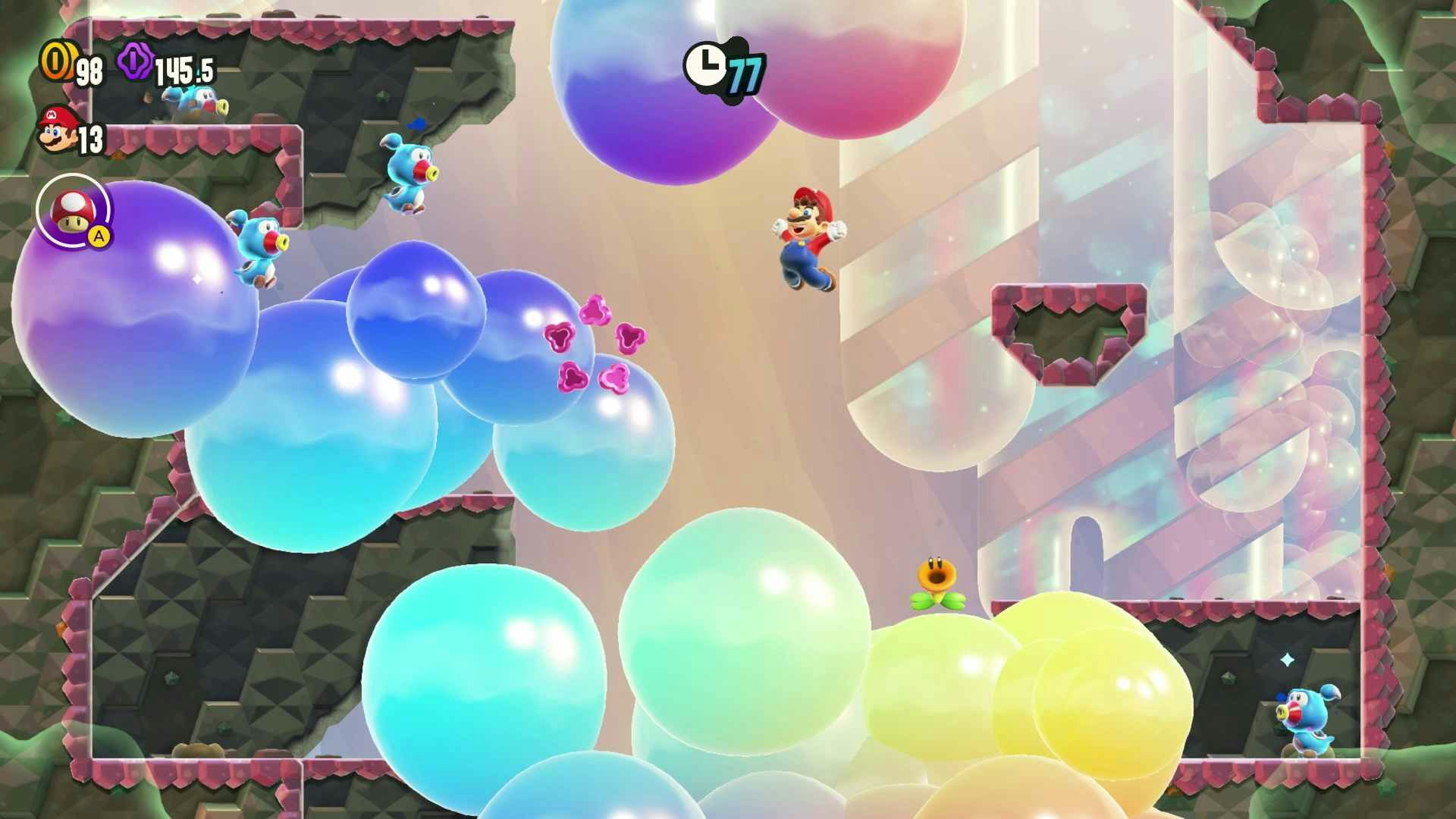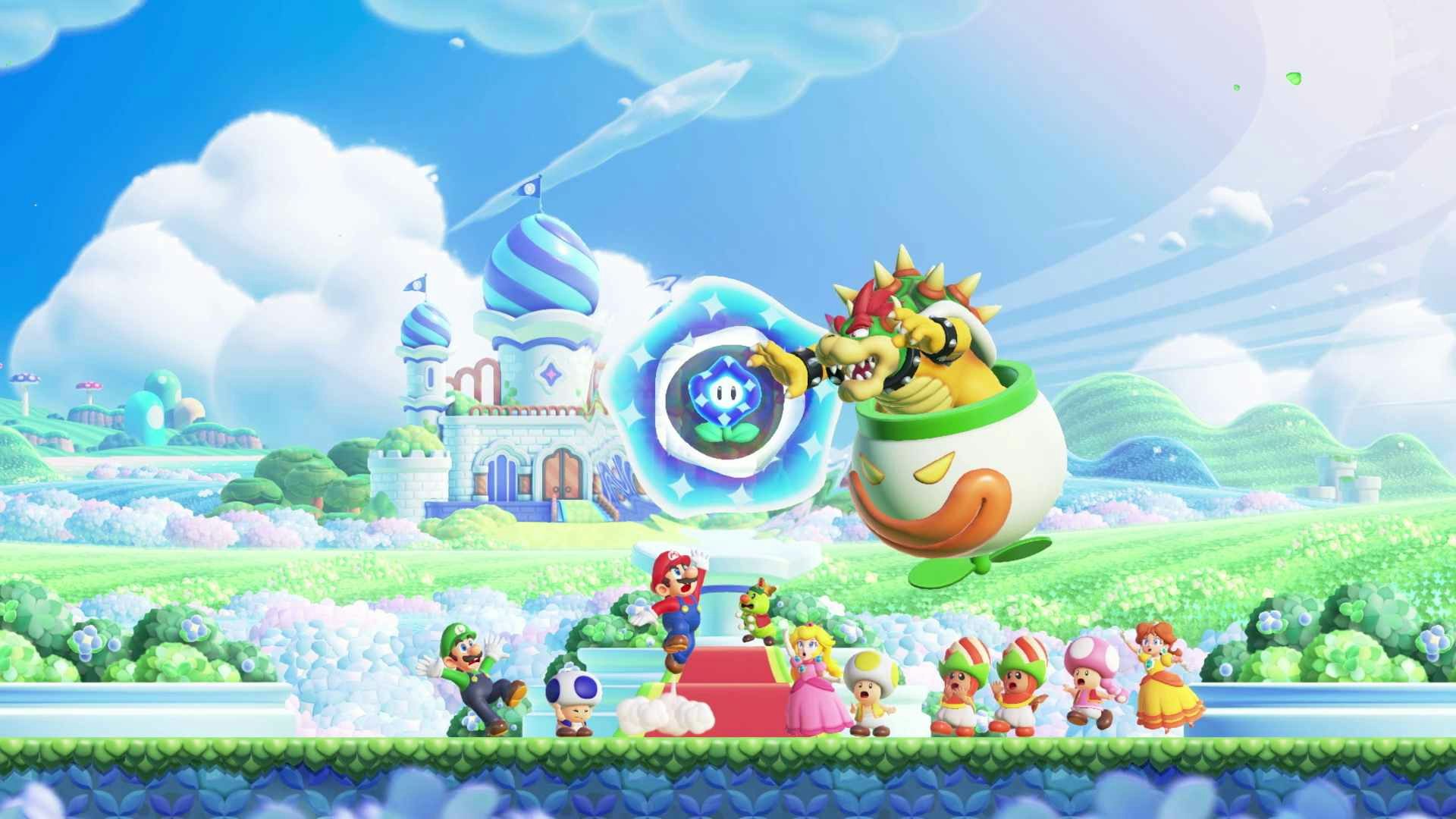
The first time I encountered a Wonder Flower in Super Mario Bros. Wonder and the level began shifting and moving around me, I felt a sense of joy and surprise. It reminded me of the first time I discovered you could find secret warp pipes at the end of World 1-2 in the original Super Mario Bros.
As the eponymous plumber’s first 2D platformer in a decade, Super Mario Bros. Wonder is a reminder of the joys that can come from running right to left across colorful screens. While 2D entries aren’t often as flashy as their 3D counterparts, Mario’s latest adventure is no less capable of surprising and delighting its audience. Through tried-and-true platforming mechanics mixed with a handful of new power-ups and the central Wonder Effect, Mario Wonder is a delightful platformer imbued with Nintendo’s signature charm.
The Elephant in the Room

When Nintendo first revealed Wonder in June of this year, the internet immediately became obsessed with the newest power-up the game would bring — the elephant. Upon consuming Elephant Fruit, Mario turns into an anthropomorphized version of the trunked animal.
In elephant form, Mario can use his trunk to hit enemies or suck up and store water to spray. But while marketing for Wonder has hinged on this power-up, it’s one of the less interesting new features. Elephant Mario’s slower movement feels antithetical to the ability to quickly run through stages, a feeling I associate with most 2D platformers.
Luckily, elephant form is not the only new power-up at Mario’s disposal in Wonder. The game also introduces the bubble and drill power-ups (and adorable outfits for every character to go with those new items). The bubble allows players to blow bubbles that capture enemies, while the drill form lets you burrow into the ground or roof of a level and drill through destructible items in the environment. This introduces the most unique track through levels, as the game allows you to burrow into any path and bypass almost any encounter with an enemy. It almost feels like cheating — in a fun way.
The feature that adds the most versatility to Mario in Wonder isn’t a power-up at all, however. Instead, it’s the game’s new Badge system. Throughout Wonder, the player will acquire Badges by completing levels or purchasing them at shops. Each Badge is linked to an ability and can be equipped before starting new levels. Badges can take the form of passive abilities like offering a Super Mushroom at the beginning of every course, or entirely new modes of traversing the map, such as the Wall-Climb Jump Badge that gives Mario an extra boost off of walls to propel himself up. Badges offer a surprising amount of player freedom for a Mario game and make repeating levels with new Badges equipped to discover additional secrets an absolute joy.
Will Wonders Never Cease?

But beyond the new gadgets and ability, the most stunning aspect of Wonder is the Wonder Effects that give this entry its name. These are found throughout the game's levels, which when interacted with, shift the entire world around the player. The earliest encounter with the Wonder Effects makes the green pipes — a steadfast and familiar game element for decades — come alive and slowly move across the screen like inch worms, creating arched backs on which to jump.
As the game progresses through its six worlds, the Wonder Effects only get more unpredictable and more rewarding to experience. No matter how many levels I played, I was still excited to start the next one because it meant discovering what new unique Wonder Effect I would encounter and how it would change the game. Each is accompanied by colorful effects and an upbeat shift in the music that only adds to that feeling of joy.
This excitement isn’t exclusive to trippy moments. Like past entries (both 2D and 3D), Wonder’s level design is itself a beautiful thing to behold, as each course is populated perfectly with new enemies and interesting platforming paths to perfect. Even the game’s overworld is gorgeous, offering an almost diorama-like aesthetic that highlights the colorful nature of each world's unique biome.
Moreover, just like the new Badge system, Wonder’s levels encourage you to constantly keep exploring the overworld and each level in search of secrets. Following in the footsteps of the earliest Super Mario games, Wonder wants to delight players by offering them the unexpected. There have been times when I have accidentally wandered into a hidden path or a secret level that I missed the first time around.
Badge of Excellence

Nintendo was very intentional in titling this game Super Mario Bros. Wonder. Every part of this Wonder is made to excite the player. The dazzling effects that shift how every level works, the expansive Badge system that offers new approaches to play, and the fun new power-ups all work together to do one thing: instill a sense of wonder in the player. And it succeeds.
In many ways, Wonder’s success is built upon the numerous iterations of past 2D Mario titles. The core idea of tight platforming across stages has been nailed down for so long that each new entry is able to iterate in more granular ways, even if it doesn’t innovate on a larger scale. Wonder doesn’t reinvent the wheel that is the Mario game, but it gives it a heck of a tune-up.
Super Mario Bros. Wonder is a dazzling return to the 2D platformer for Nintendo’s star plumber and his band of friends. My only hope in the aftermath of Wonder is that it doesn’t take another decade to see more 2D Mario games.
8/10
Super Mario Bros. Wonder releases on October 20 for Nintendo Switch. Inverse reviewed the game on Nintendo Switch.
INVERSE VIDEO GAME REVIEW ETHOS: Every Inverse video game review answers two questions: Is this game worth your time? Are you getting what you pay for? We have no tolerance for endless fetch quests, clunky mechanics, or bugs that dilute the experience. We care deeply about a game’s design, world-building, character arcs, and storytelling come together. Inverse will never punch down, but we aren’t afraid to punch up. We love magic and science-fiction in equal measure, and as much as we love experiencing rich stories and worlds through games, we won’t ignore the real-world context in which those games are made.







